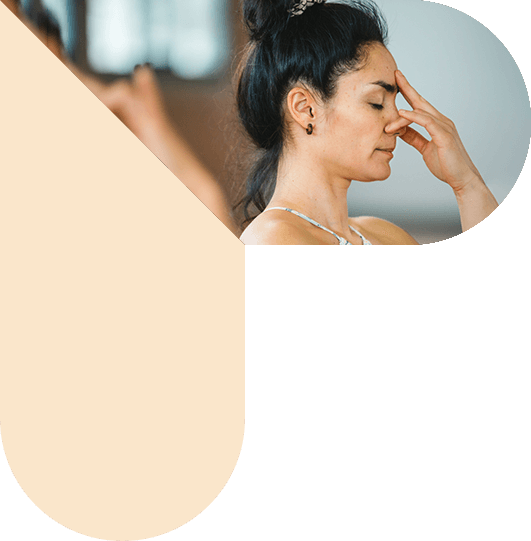Breathwork training
for mind, body and spirit
You breathe in and out about 22,000 times per day. Your lungs take in air, extract life-sustaining oxygen and send it to your bloodstream. Your blood delivers this oxygen to your tissues and organs to keep your body working as it should.
Feelings of stress and anxiety can disrupt this process.

Stress or
anxiety

Faster, shallower breathing

Brain sense
a threat

Body responds with fight or flight
Breathwork training taps into the connection between your mind and body to help you better manage the stress response.
Breathwork techniques involve taking conscious control of your breathing to activate your parasympathetic nervous system – the part of your nervous system that helps you to rest and digest.
Through slow, deliberate breathing, you tell your brain that you’re OK. Your brain then feels able to exit ‘fight or flight’ mode and tells your body to relax.
People choose to do breathwork for many reasons. With guidance and support from one of our trained professionals, breathwork training may help with stress relief and managing feelings of anxiety. Over time, this could help you achieve a greater sense of tranquility and focus.
Breathwork techniques might be engaged to support your physical wellbeing, too. Some people use breathwork to help them sleep better, or to help with blood pressure control and immune function.
Whatever your reason for exploring breathwork, our experienced counsellors will be right alongside you, providing a safe space to discover how it might work for you.

